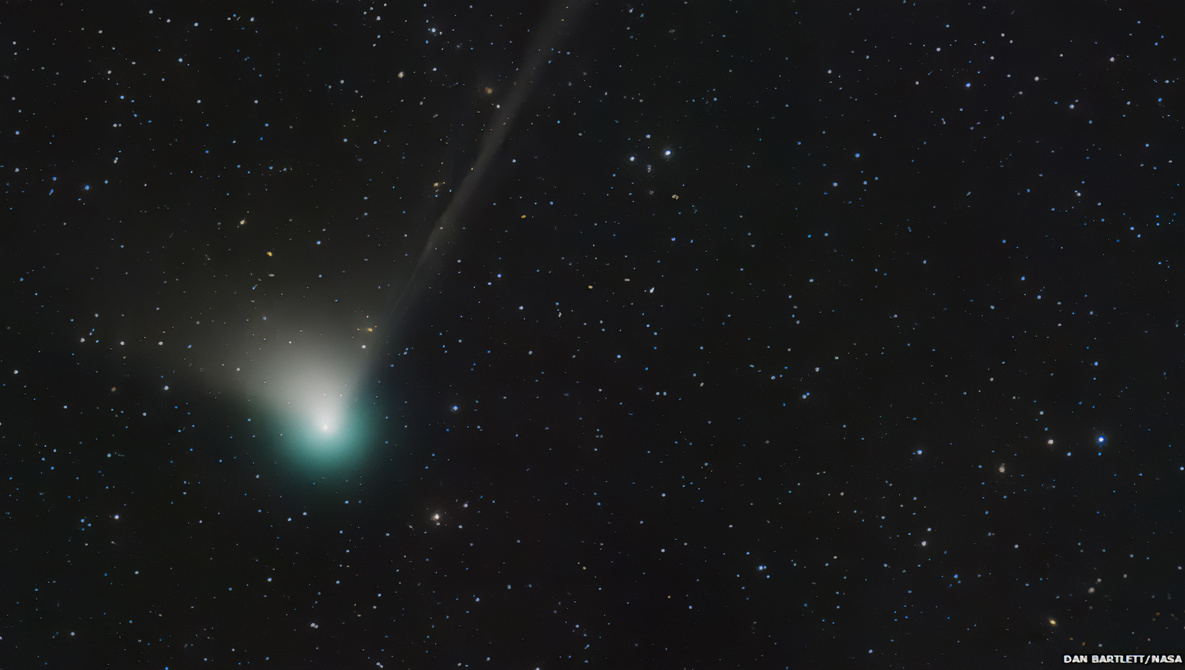[ad_1]
Astrophotographers and even regular photographers have a chance at a comet that is now appearing in our early morning, pre-dawn skies. I’m talking about Comet C/2022 E3 ZTF, rapidly approaching its closest encounter with our sun. It hasn’t been to our part of the solar system for about 50,000 years. It’s a striking green in color, and not all comets are, so it’s created a stir among astrophotographers.
It could be the first naked eye comet since Neowise, which graced our night skies in the summer of 2020.
Comet C/2022 E3 ZTF was discovered in March of last year by the f/2.4 Schmidt telescope at Mt. Palomar. It was very dim then, but as it approaches the sun it is steadily brightening.
Where Is C/2022 E3 ZTF?
For the next couple of weeks, observers in the Northern Hemisphere can spot it in the Northeastern sky. The BBC Website has some good info on finding the comet.
Look for the comet above the northeastern horizon after midnight between the constellations of Hercules and Bootes.
By the third week of January, the comet will become circumpolar for mid-northern latitude viewers. Then, the comet will be visible after sunset and all night long for viewers in the Northern Hemisphere. On January 29, it will pass close to Polaris, the North Star. If it brightens up to say, the 5th magnitude, it should be visible to naked eye observers away from city lights.
By February, the Moon will be growing brighter, making observations difficult. Here’s a chart from NASA that will help you locate the comet.

If you want to capture it, you can probably do it with a medium to long lens (80-200mm) because the object is small. Don’t expect a dramatic tail on the comet, but that could change. You’re looking for basically a smudge.
Capturing the Comet
If you’re going to give the comet a go in the Northern Hemisphere, try around the 25th of this month, after 10 pm. The moon won’t interfere on that date. Using the chart below, point your DSLR or mirrorless camera to the area shown that matches the date. You’ll want to be at least ISO 400 or higher, but you’ll get more noise as the ISO increases. A tripod, of course, will be required. About 15 seconds, is the maximum exposure to avoid star trailing, unless you have a tracking mount.
By some reports, it’s approaching Magnitude 7, not a naked eye object, but visible with a longer exposure.
I gave the comet a try on January 13 from Arizona. Sadly, there were a lot of high clouds.

I wasn’t too impressed with what I got by stacking 10 30-second exposures on a tracking mount. There was only a hint of a tail, but I expect the comet to become brighter with more of a tail as the month progresses.
Comets are somewhat unpredictable, so it may get a lot brighter or fade. Still, naked eye comets are rare, and this one won’t be back for another 50,000 years, so the next couple of weeks are your only chance.
If you get some worthwhile shots of our cosmic visitor, please send it along in the comments. Good hunting.
[ad_2]
